CESA.
COMESA Minerals Protocol

The Common Market for East and Southern Africa (Comesa) crafted a mineral policy to regulate and standardise the mining sector in the region to reduce leakages and exportation of raw minerals. The minerals policy task is to deal with minerals after realisation that the mining sector in the region is facing a serious challenge of poor pricing framework and policy formulation.
CESA, The COMESA Minerals Protocol came as an answer to such challenges. We help also homogenising the documentation processing of the minerals prior to circulation in COMESA zone, Africa in general or exportation outside COMESA zone.
+
Years Experience
+
Member States
%
Success Rate
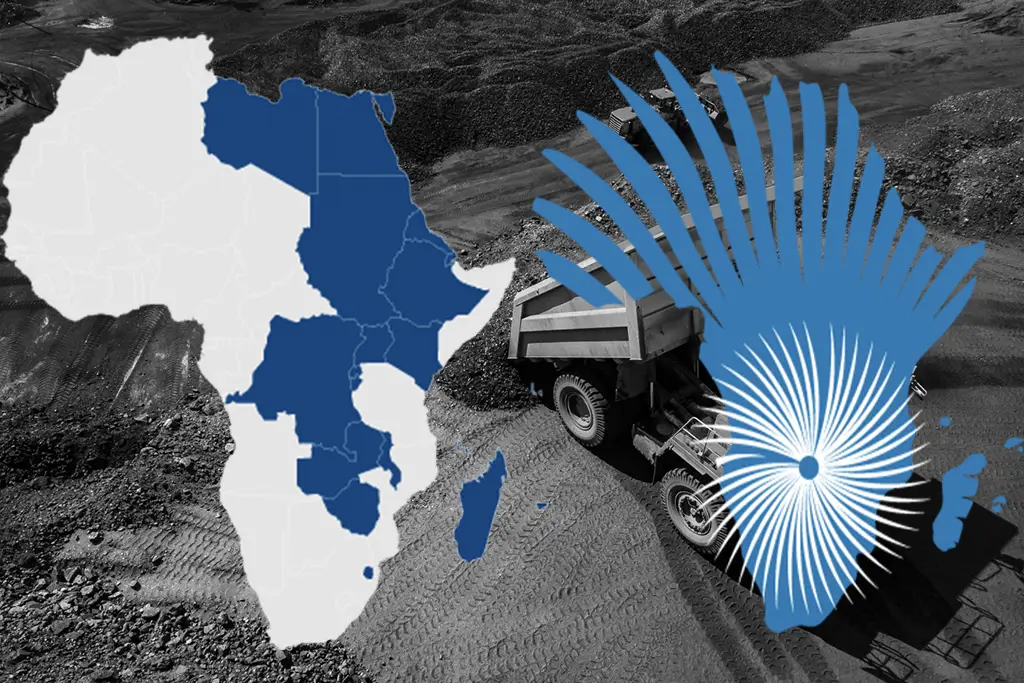
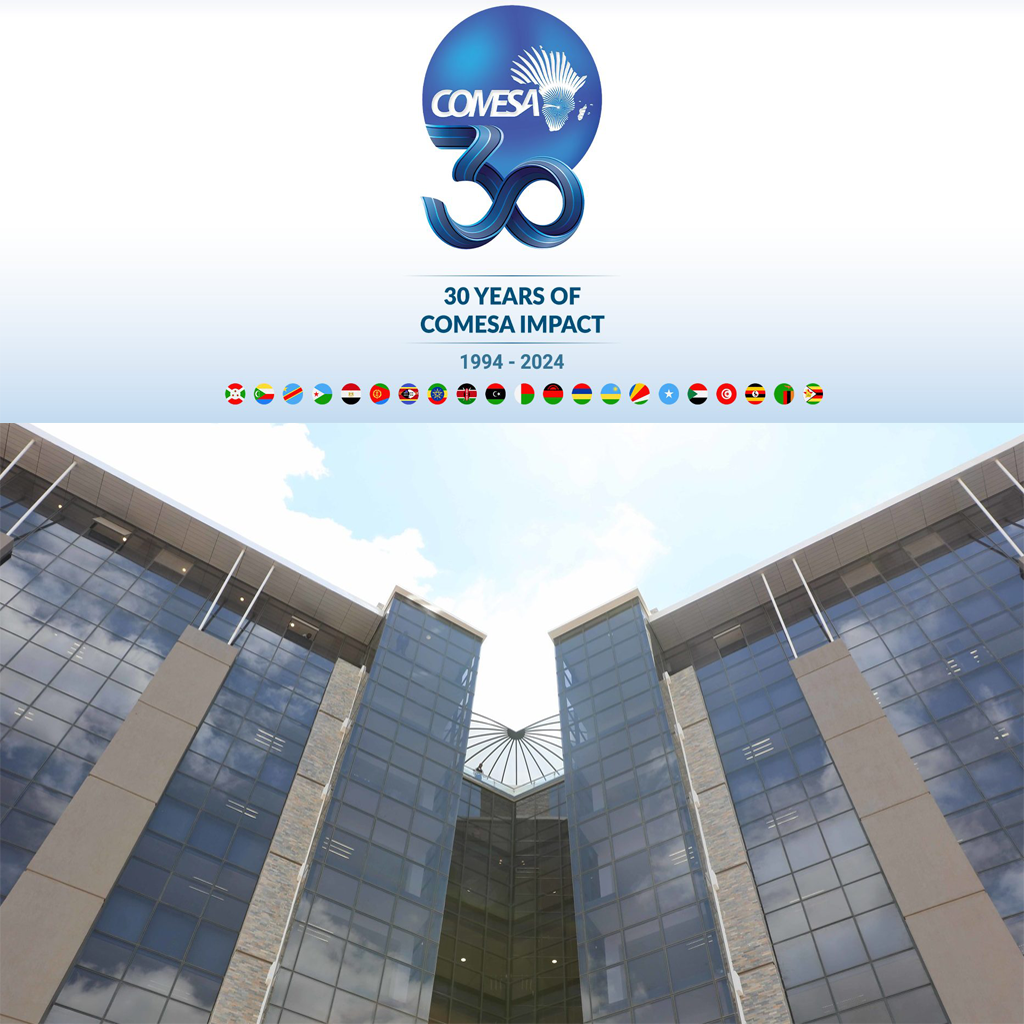
Overview of COMESA
Vision:
COMESA’s Vision is to “be a fully integrated, internationally competitive regional economic community with high standards of living for all its people ready to merge into an African Economic Community”.
Mission:
Its Mission to “Endeavour to achieve sustainable economic and social progress in all Member States through increased co-operation and integration in all fields of development particularly in trade, customs and monetary affairs, transport, communication and information, technology, industry and energy, gender, agriculture, environment and natural resources”, the Secretariat was guided to develop its specific Mission Statement as follows: “To provide excellent technical services to COMESA in order to facilitate the region’s sustained development through economic integration”.
Core Values:
COMESA’s core values were defined as follows:
- The Secretariat believes in satisfying its customers.
- It delivers services with professionalism, integrity and innovation.
- It believes in quality leadership, teamwork and respect for each other in an enabling environment.
- It cares for the environment and upholds its social responsibility.
The Mission and Values Statements on their own are not sufficient to ensure an efficient and effective service delivery. They have to be linked to the strategy of the Secretariat which is building excellence into every process of the organisation through:
- Creation of a participatory environment which allows and encourages every staff to contribute to the development of the organisation either individually or in teams;
- Enhancement staff competencies through continuous improvement;
- Establishment of economical, efficient and effective systems and procedures; and
- Effective and efficient communication.
COMESA Overview & CESA
COMESA’S PRIORITIES AND OBJECTIVES
The history of COMESA began in December 1994 when it was formed to replace the former Preferential Trade Area (PTA) which had existed from the earlier days of 1981. COMESA (as defined by its Treaty) was established ‘as an organisation of free independent sovereign states which have agreed to co-operate in developing their natural and human resources for the good of all their people’ and as such it has a wide-ranging series of objectives which necessarily include in its priorities the promotion of peace and security in the region.
However, due to COMESA’s economic history and background its main focus is on the formation of a large economic and trading unit that is capable of overcoming some of the barriers that are faced by individual states.
COMESA’s current strategy can thus be summed up in the phrase ‘economic prosperity through regional integration’. With its 19 member states, population of over 389 million and annual import bill of around US$32 billion with an export bill of US$82 billion COMESA forms a major market place for both internal and external trading. Its area is impressive on the map of the African Continent covering a geographical area of 12 Million (sq km). Its achievements to date have been significant.
A FREE TRADE AREA
The FTA was achieved on 31st October, 2000 when nine of the member States namely Djibouti, Kenya, Madagascar, Malawi, Mauritius, Sudan, Zambia and Zimbabwe eliminated their tariffs on COMESA originating products, in accordance with the tariff reduction schedule adopted in 1992.This followed a trade liberalisation programme that commenced in 1984 on reduction and eventual elimination of tariff and non-tariff barriers to intra- regional trade. Burundi and Rwanda joined the FTA on 1st January 2004. These eleven FTA members have not only eliminated customs tariffs but are working on the eventual elimination of quantitative restrictions and other non-tariff barriers.
CUSTOMS UNION
A Customs Union maybe defined as a merger of two or more customs territories into a single customs territory, in which customs duties and other measures that restrict trade are eliminated for substantially all trade between the merged territories. The territories, in turn apply the same duties and measures in their trade with third parties. In preparation for a Customs Union the Eleventh Meeting of the Council of Ministers held in Cairo, Egypt adopted a Road Map that outlined programmes and activities whose implementation was necessary before the launching of the Union. It is expected that the launch will be achieved by the year 2008
TRADE PROMOTION
Other objectives which will be met to assist in the achievement of trade promotion include:
- Trade liberalisation and Customs co-operation, including the introduction of a unified computerised Customs network across the region.
- Improving the administration of transport and communications to ease the movement of goods services and people between the countries.
- Creating an enabling environment and legal framework which will encourage the growth of the private sector, the establishment of a secure investment environment, and the adoption of common sets of standards.
- The harmonisation of macro-economic and monetary policies throughout the region.
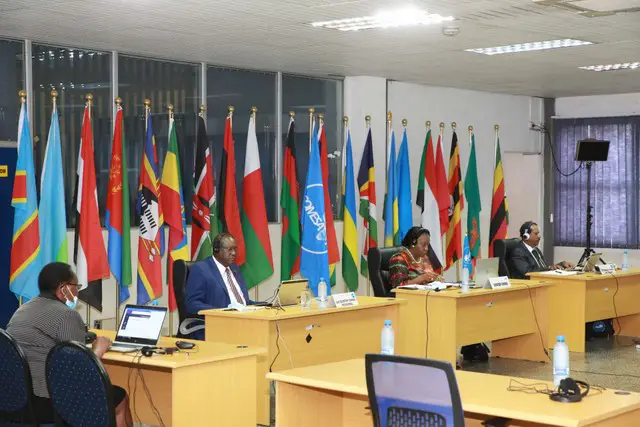
COMESA INSTITUTIONS
Several institutions have been created to promote sub-regional co-operation and development. These include:
- The COMESA Trade and Development Bank in Nairobi, Kenya
- The COMESA Clearing House in Harare, Zimbabwe
- The COMESA Association of Commercial Banks in Harare, Zimbabwe
- The COMESA Leather Institute in Ethiopia
- The COMESA Re-Insurance Company (ZEP-RE) in Nairobi, Kenya
- The COMESA Minerals Protocol (CESA) in Dar Es Salaam, Tanzania
In addition a Court of Justice was also established under the COMESA Treaty and became formally operational in 1998.
Further initiatives exist to promote cross border initiatives, form a common industrial policy and introduce a monetary harmonisation programme.
WHAT COMESA OFFERS
COMESA offers its members and partners a wide range of benefits which include:
- A wider, harmonised and more competitive market
- Greater industrial productivity and competitiveness
- Increased agricultural production and food security
- A more rational exploitation of natural resources
- More harmonised monetary, banking and financial policies
- More reliable transport and communications infrastructure
THE DECISION MAKING PROCESS
COMESA has evolved a comprehensive decision making structure at the top of which are the Heads of State of the 20 member countries. There is then a Council of Ministers responsible for policy making, 12 technical committees and a series of other advisory bodies (including specific relations with partner countries and the business community). In addition each member state appoints liaison persons in their appropriate ministries who form part of the day-to-day communication process.
Overall co-ordination is achieved through the Secretariat, based in Lusaka, Zambia, who will be happy to deal with all initial communication.
COMESA MINERALS PROTOCOL (CESA)
The COMESA (Common Market for Eastern and Southern Africa) region is rich in mineral resources. COMESA has developed policies and strategies to regulate and standardize the mining sector, aiming to reduce raw mineral exports and promote value addition. The region boasts a significant share of the world's mineral reserves, including a large percentage of global diamond deposits.
COMESA in conjunction with the government of Western Australia developped a harmonized regional mineral policy focusing on the legal and regulatory framework. This is intended to level the operating environment for mineral resources exploitation.
CESA is involved in:
Regulate and Standardize:
The organization has developed a mineral policy to standardize and regulate the mining sector across member states.
Address Mineral Leakages:
CESA aims to reduce the loss of valuable minerals through better regulation and control.
Promote Value Addition:
CESA encourages member states to add value to their minerals before export, rather than just exporting raw materials, to increase economic benefits.
Support Local Content:
CESA provides guidelines for local content policies to help member states develop their mining industries.
Facilitate Trade:
CESA promotes trade in minerals among its member states.
Linking Databases:
Linking Certification Database to fight and eliminate minerals exportation related fraud.
Services
Regulate, Standardize, Harmonize
Harmonized policies to underpin mineral resource gains in Africa, this potential can be sustainably harnessed through establishment of governance structures and leveraging on the existing multinational trade agreements.
Address Several Mineral Leakages
COMESA's customs cooperation initiatives, such as the COMESA Customs Transit Guarantee (RCTG) Carnet system, enhance security and transparency in the movement of goods, including minerals, across borders.
Promote Value Addition
Promoting value addition to minerals within its member states by fostering regional integration, supporting industrialization, and facilitating trade. This includes initiatives like developing regional value chains, establishing special economic zones, and providing technical assistance for mineral processing.
Support Local Content
COMESA is working to harmonize mineral policies across member states to create a more predictable and investor-friendly environment for mineral development and value addition. We invest in capacity building and initiatives to enhance the skills and knowledge of individuals involved in the mining sector.
Facilitate Trade
Facilitating mineral trade within its member states by promoting trade liberalization, trade facilitation, and regional integration. It achieves this through various mechanisms, including establishing a free trade area, harmonizing customs procedures, and supporting infrastructure development.
Linking Databases
Our role in linking databases of mineral exports is multifaceted, encompassing trade facilitation, infrastructure development, technical assistance, monitoring, and the promotion of regional integration. Through these efforts, we aim at creating a more transparent, efficient, and predictable environment for mineral trade.
Minerals Certification
We play a significant role in certifying mineral exports through our rules of origin and the issuance of COMESA Certificates of Origin. These certifications are crucial for goods, including minerals, to benefit from preferential tariffs and streamlined customs procedures within the COMESA free trade area.
Fighting Fraud and Scams
CESA research has identified several critical gaps and challenges that need to be addressed to effectively combat the wide range of crimes linked to critical minerals, such as illegal mining, smuggling, money laundering, corruption, and organized crime. New tools are helping considerably to win over the problem.
Pre-Transaction Due Diligence
Crucial in combating scams by identifying and mitigating risks associated with supply chains, particularly in conflict-affected and high-risk areas. It involves a systematic process of investigation and assessment to ensure investors funds remain safe, and doesn't end up in criminal gangs hands.
TRIPARTITE ZONE

Consisting of 26 member countries, the COMESA-EAC-SADC Tripartite is accelerating economic integration for the people of the Eastern and Southern African Region.
The Tripartite is an umbrella organisation consisting of 3 of Africa’s Regional Economic Communities, namely: the Common Market for Eastern and Southern Africa; the East Africa Community and the Southern African Development Community. The Tripartite consists of 26 member countries.
Key Provisions of the Agreement:
The supreme objective of the Tripartite is to contribute to the broader objectives of the African Union that is accelerating economic integration of the continent and achieving sustainable economic development leading to poverty alleviation and improvement in quality of life for the people of the Eastern and Southern African Region.
Current Status:
- Ratified by Republic of Burundi,Republic of Kenya, Republic of Rwanda and Republic of Uganda.
- Signed by Democratic Republic of Congo and the United Republic of Tanzania, ratification is pending.
- Not yet signed by the Republic of South Sudan.
Memorandum of Understanding on Inter-regional Co-operation and Integration:
A Memorandum of Understanding on Inter-regional Co-operation and integration was entered into in 2005 to enhance economic development and integration of markets as a stimulus for profitable business in the region. The Memorandum of Understanding was signed by His Majesty King Mswati III, H.E. Jakaya Mrisho Kikwete, and H.E. Hifikepunye Pohamba for COMESA, EAC, and SADC respectively.
At the Tripartite Summit of 22 October 2008, the Heads of State and Government representing the three regional economic communities agreed to establish a single Customs Union, beginning with a Free Trade Area. The Tripartite Free Trade Area (TFTA) is a proposed African free trade agreement between the Common Market for Eastern and Southern Africa (COMESA), Southern African Development Community (SADC) and East African Community (EAC).
The COMESA-EAC-SADC Tripartite Memorandum of Understanding containing provisions on the establishment of the Tripartite Free Trade Area (TFTA) was signed on 19 January 2011. On June 10, 2015 the TFTA agreement was signed in Egypt by the countries included in the TFTA. The TFTA would be officially formed once ratified by the national parliaments of all member states.
+
Member Countries
+
Regional Blocks
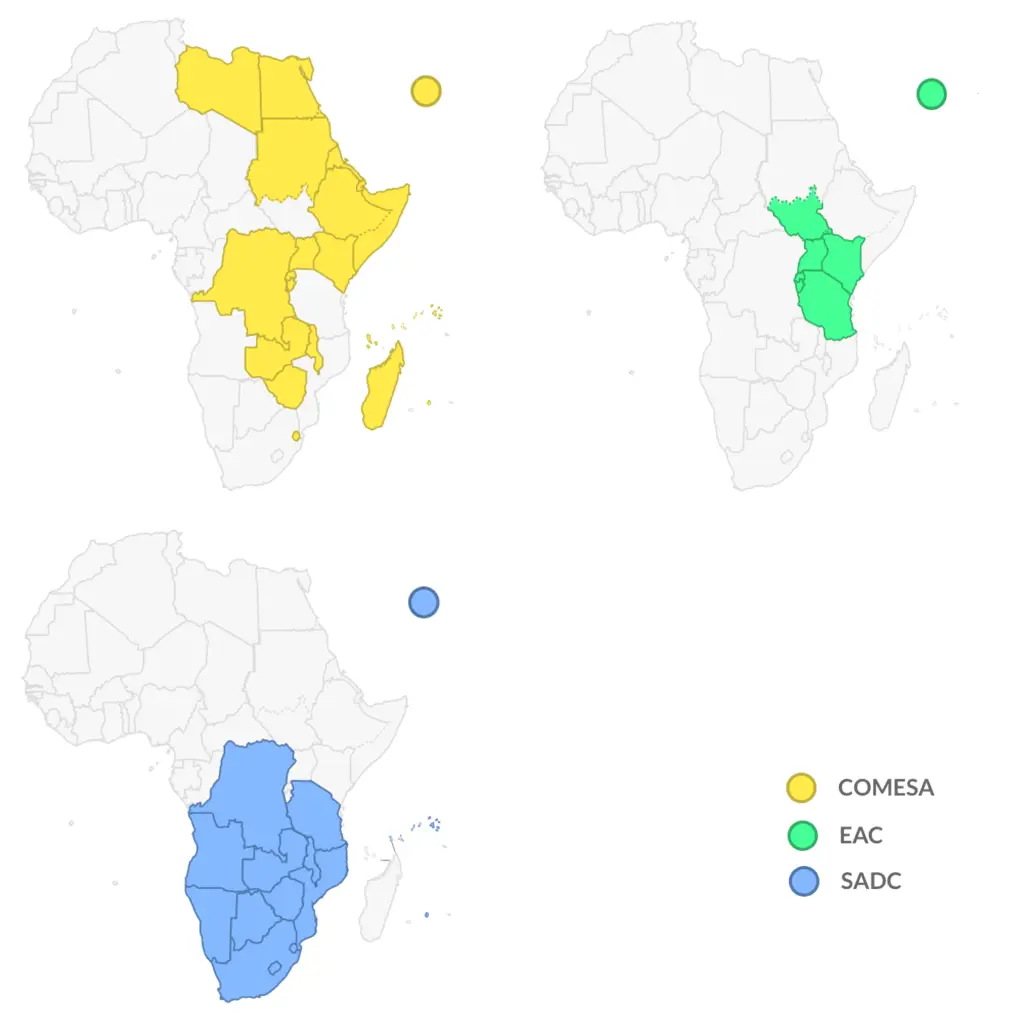
The maps highlight the 26 countries in the Eastern and Southern African (EA-SA) region that are members of the Tripartite formed by COMESA (Common Market for Eastern and Southern Africa) – indicated in yellow, EAC (East African Community) – indicated in green, and SADC (Southern African Development Community) – indicated in blue. Certain countries are members of more than one of these Regional Economic Communities (RECs).
The CESA (COMESA Minerals Protocol) focuses on the whole region covering the 26 countries.
TRACKING
In our homogenization program, we made sure all documentation used in The Tripartite Free Trade Area (TFTA) are Homogenized into Similar Documents Used for exportation of minerals into the whole COMESA - EAC - SADC zone. There is a unique tracking number located on a sticker on the left of all documentation and it is used to know the necessary details an importer would need.
COMEXSOFT an online application helps customs officials at different posts to enter data about minerals circulating in the TFTA Zone using a homogenized Lot number code and data from all registered official mines in the zone.
Enter the 7 digits representing your Customs Entry number or your Certificate of Origin number:
MINERALS EXPORTATION
TRIPARTITE FTA REGION ON THE MAP:
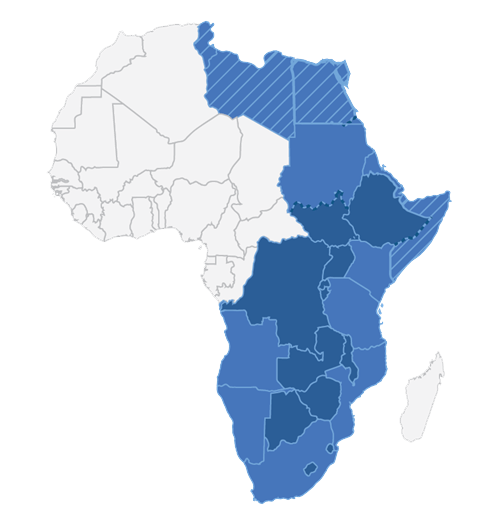
SECOND LEVEL DOCUMENTATION
The above four documents are mandatory for customs clearance and transfer of payment, while the following documents may be optionally required by the Refinery, the Banks, Customs and other Governmental Authorities so in order to avoid any delays, the Seller is strongly advised to also submit them on time.
- Inventory of goods - packing list with gross and net weight and serial numbers of packing boxes
- Insurance Certificate
- Exportation license (for exporting company) / Master Dealers License
- Certificate of ownership stating that Seller is the lawful owner of the goods
- Export Permit (for each shipment)
- Preliminary Assay Report
- Customs Certificate and taxes receipt of the country of origin
- Title of exportation and declaration by Seller/Supplier/Owner stating that payment of all duties, charges and taxes to the relevant authorities at origin, that the minerals are of non-criminal origin, unencumbered and free of any liens, transferable and exportable
- Shipping Approval Certificate or Re- Export Authorization
- Further required documentation if the Gold comes from the DRC or any neighboring country to the DRC or a country that the Import Country requires such documentation, as follows:
- UN MONUSCO Clearance
- Interpol clearance certificate
- Compliance that the gold contains no Deleterious Elements
TOP LEVEL DOCUMENTATION
- Each mineral shipment and delivery shall be identified with all appropriate contract numbers. Copies of the documents shall be sent for customs pre-clearance (if at all possible and done by the Import Country customs authorities) and original documents will be provided with shipment at the port of destination.
- Three original Proforma Commercial Invoices in favor of the Buyer based on the weight and purity of the minerals ascertained by the Preliminary Assay Report (“for customs purposes only) (“Proforma Commercial Invoice”).
- Certificate of Origin.
- Full set Original Bill of Landing / Bill of Entry (BOE) / Customs Declaration Form with no marking of any kind but showing the appropriate Harmonized Custom Code.
DOCUMENTATION HOMOGENIZATION & TRACKING
In our homogenization program, we made sure all documentation used in The Tripartite Free Trade Area (TFTA) are Homogenized into Similar Documents Used for exportation of minerals into the whole COMESA - EAC - SADC zone. There is a unique tracking number located on a sticker on the left of all documentation and it is used to know the necessary details an importer would need.
COMEXSOFT3 an online application helps customs officials at different posts to enter data about minerals circulating in the TFTA Zone using a homogenized Lot number code and data from all registered official mines in the zone.
MINING PROJECTS
The COMESA, EAC, and SADC regions are rich in mineral resources, holding significant portions of global reserves for various minerals. While these regions contribute substantially to global mineral production, their overall share varies by mineral and specific region.
COMESA:
Common Market for Eastern and Southern Africa with its 21 member states.
- The COMESA region possesses a significant portion of the world's mineral reserves, including a third of the world's reserves and two-thirds of the global diamond deposits.
- Member states are rich in mineral resources, including gold, diamonds, copper, and other valuable minerals. However, much of this mineral wealth is currently exported as raw materials with minimal value addition. COMESA is working to promote regional industrialization, including in the mining sector, to increase value addition and intra-COMESA trade.
EAC:
The East African Community with its eight (8) partner states.
- The EAC region is rich in various mineral resources, including nickel, vanadium, gold, uranium, rare earth oxides, and more.
- The mining sector in the EAC contributes significantly to the region's GDP and foreign exchange earnings, particularly through the export of copper and gold.
- The EAC has seen growth in its mining sector, with increased investment in infrastructure and a focus on trade facilitation.
SADC:
The Southern African Development Community currently with its 16 member states.
- The Southern African Development Community (SADC) region is known for its vast mineral wealth, including platinum group metals, manganese, chromium, gold, and vanadium.
- South Africa, a key SADC member, is a major global producer of platinum group metals, manganese, chromium, and gold.
- The region also has significant deposits of diamonds, with countries like Botswana and the Democratic Republic of Congo being major producers.
- SADC faces challenges related to environmental and social impacts of mining, including land degradation and pollution.
- While these regions hold substantial mineral resources, the actual production and contribution to global markets vary.
- Africa, in general, accounts for a significant portion of global reserves for several minerals, including cobalt, manganese, and diamonds.
- However, the figures for specific minerals and regions can vary, as new deposits are constantly being explored.
- Critical minerals, essential for green technologies and other industries, are also found in significant quantities in sub-Saharan Africa.
- Regional integration efforts within COMESA, EAC, and SADC aim to boost trade and economic growth through the exploitation and trade of these mineral resources.
Kamoa Copper Project – DR Congo
contains 43.5 million tonnes of copper...

Tenke Fungurume Project – DR congo
one of the world’s largest copper-cobalt reserves...

Lumwana Mine – Zambia
has over 3.3 billion pounds of copper...

Catoca Diamond Mine – Angola
contributes 6% of world diamond production...

Rossing Uranium Project – Namibia
contributes 8% of world uranium production...

Jwaneng Diamond Mine – Botswana
produces about 11 million cataracts of diamonds...

Frequently Asked Questions
1. What is CESA?
CESA is the platform for the COMESA Minerals Protocol, which helps facilitate mineral export compliance and ensures due diligence in the mineral trade across COMESA member states.
2. How can I verify export documents or permits?
Send your documents to tracking@cesaofficial.com for verification. We aim to respond within 24 hours to confirm the authenticity of your permits and certificates.
3. Is CESA affiliated with government authorities?
Yes, CESA operates under the coordination of the COMESA Secretariat, EAC Secretariat and SADC Secretariat in collaboration with national ministries of trade, industry, and mining of the respective member states.
4. How can I access statistical or investor data on regional mineral trade?
For investor resources or detailed trade data, contact us via resources@cesaofficial.com. We’ll provide the relevant statistics within 48 hours.
5. What services does CESA provide for mineral exporters and importers?
We assist exporters with documentation verification, due diligence processes, licensing guidance, and tracking of permits to ensure smooth mineral exportation.
6. Are there any membership fees to use CESA’s services?
Basic services such as document tracking and verification are provided free of charge. However, certain advanced services may involve additional fees when coordinated services of third parties organizations are called upon.
Special Emails:
The following email addresses were set up to help interact with our team:
due.diligence[@]cesaofficial.com,
(Due Diligence on Operators)
resources[@]cesaofficial.com,
(Resources for Investors)
tracking[@]cesaofficial.com,
(Tracking Documentation)
queries@cesaofficial.com,
(General Queries)
Contact
Contact Information
Feel free to reach out with any questions about the organization, speaking engagements, or media inquiries.
Email:
info@cesaofficial.com
Phone:
[Withheld]
Address:
EAC Close, Afrika Mashariki Road
P.O. Box 1096, Arusha
United Republic of Tanzania